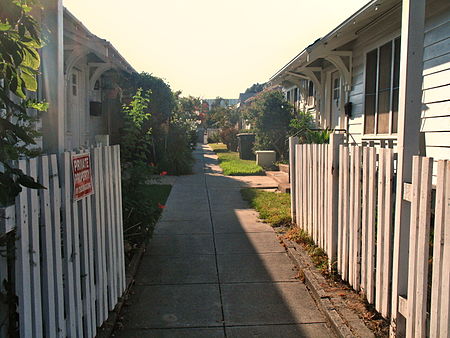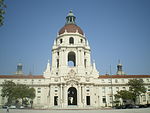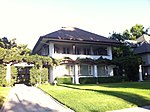Colonial Court
Bungalow architecture in CaliforniaBungalow courtsColonial Revival architecture in CaliforniaHouses completed in 1916Houses in Pasadena, California ... and 3 more
Houses on the National Register of Historic Places in CaliforniaLos Angeles County, California Registered Historic Place stubsNational Register of Historic Places in Pasadena, California

Colonial Court is a bungalow court located at 291–301 N. Garfield Ave. in Pasadena, California. The court consists of six houses arranged around a narrow courtyard. The houses are designed in the Colonial Revival style and feature clapboard siding and jerkinhead roofs. Built in 1916, the homes were designed by architect Cyril Bennett.The court was added to the National Register of Historic Places on July 11, 1983.
Excerpt from the Wikipedia article Colonial Court (License: CC BY-SA 3.0, Authors, Images).Colonial Court
Corson Street, Pasadena
Geographical coordinates (GPS) Address Nearby Places Show on map
Geographical coordinates (GPS)
| Latitude | Longitude |
|---|---|
| N 34.151111111111 ° | E -118.14416666667 ° |
Address
Corson Street 308
91101 Pasadena
California, United States
Open on Google Maps






